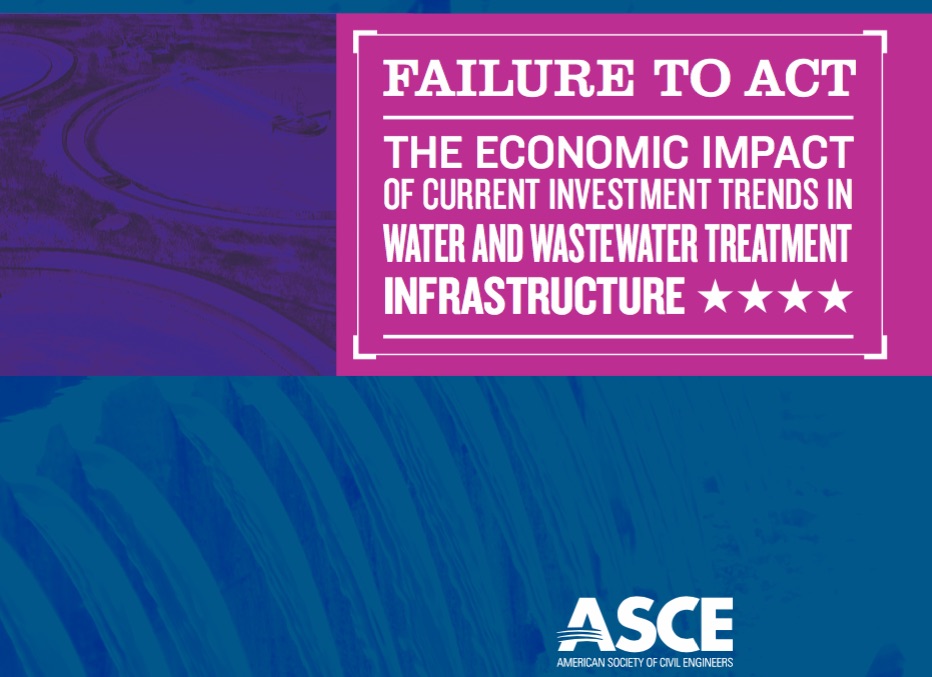The Water Infrastructure Problem
It’s no secret that infrastructure—including electric grids, fossil fuel pipelines, public transportation lines, bridges, railways, and roads—are in a rapid state of decline in the U.S., and that there is not nearly enough money allocated to their repair and maintenance. Central to that problem and probably the most alarming aspect of it is the fact that water infrastructure systems—the pipes that bring us treated water and the sewer lines that take waste water away—are in various states of disrepair all around the country (it’s worth noting that this is an international problem as well).
While the American Society of Civil Engineers (ASCE) gave U.S. infrastructure a D+ on its 2017 report card, water infrastructure received a D. Water infrastructure comprises 100 million miles of underground pipes, consisting of over 150,000 separate systems managed by public utilities and communities. Many of the pipes are over 120 years old, and most were installed before the 1970s. At current rates of repair, it would take over two centuries to lay new pipes, and since most pipes have a lifespan of 75-100 years, that wouldn’t help us much at all.
For more information on the water infrastructure problem, please download these detailed reports from the ASCE, The Value of Water Campaign, and The American Water Works Association.
Potential Solutions
Many experts have been warning us about this water infrastructure problem for years. So what can we do?
- Increase funding and develop investment strategies for maintaining and improving the nation’s water infrastructure.
All of the above reports agree: if maintenance and repairs continue at current rates, at the available level of funding, all water infrastructure systems in the country will fall into worse disrepair, resulting in ineffective water and sewer delivery and treatment. There are many ideas about how to increase funding or change management methods, from public-private partnerships to community-based solutions. What is clear is that planners need to work together more broadly across regions, because water flows across human borders, and we all depend on the health and successful management of interdependent watersheds. For more information about investment and finance options, check out this EPA blog post from 2016 and the EPA Water Infrastructure and Resiliency Finance Center.
- Equity, access, and human rights should be a primary concern in all water management models and systems.
Water is a human right; it is necessary to live. Inequities in water treatment and delivery need to be addressed first and foremost. For more information and ideas about water equity, check out the U.S. Water Alliance briefing paper An Equitable Water Future and the One Water Roadmap.
- Innovate and embrace new technologies.
New developments in desalination, green infrastructure, and water reclamation/recycling can reduce our dependence on traditional gray infrastructure, provide a range of environmental, recreational, and economic benefits, make water more accessible and less expensive for consumers. For some ideas, check out EPA’s website on Water Recycling and Reuse.
- Encourage sustainable practices at the policy level.
Policy and community education can be used to reduce water use among consumers by promoting native plants gardens instead of lawns, encouraging use of rain barrels and other water catchment systems where appropriate, and regulating unnecessary use of fresh water.
- Rethink our relationship with water.
Many engineers and planners are taking a different philosophical approach to the question of how to manage water. Reliance on gray infrastructure and rigid flood control measures have alienated many communities from their natural environments, while further decimating natural and human systems. Building systems that better utilize existing natural flood events and seasonal flows, and which enhance the recreational and aesthetic benefits of water and its habitats, takes less energy and effort in the long term and creates healthier communities. For case studies on what such a vision might look like, check out Connecting Delta Cities.
Please post additional ideas and resources in the comments!

